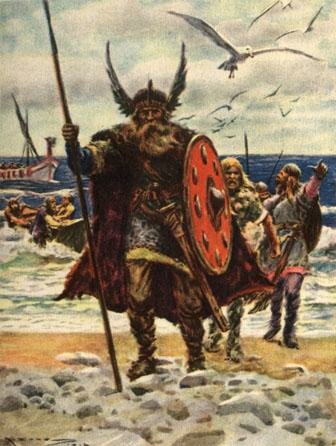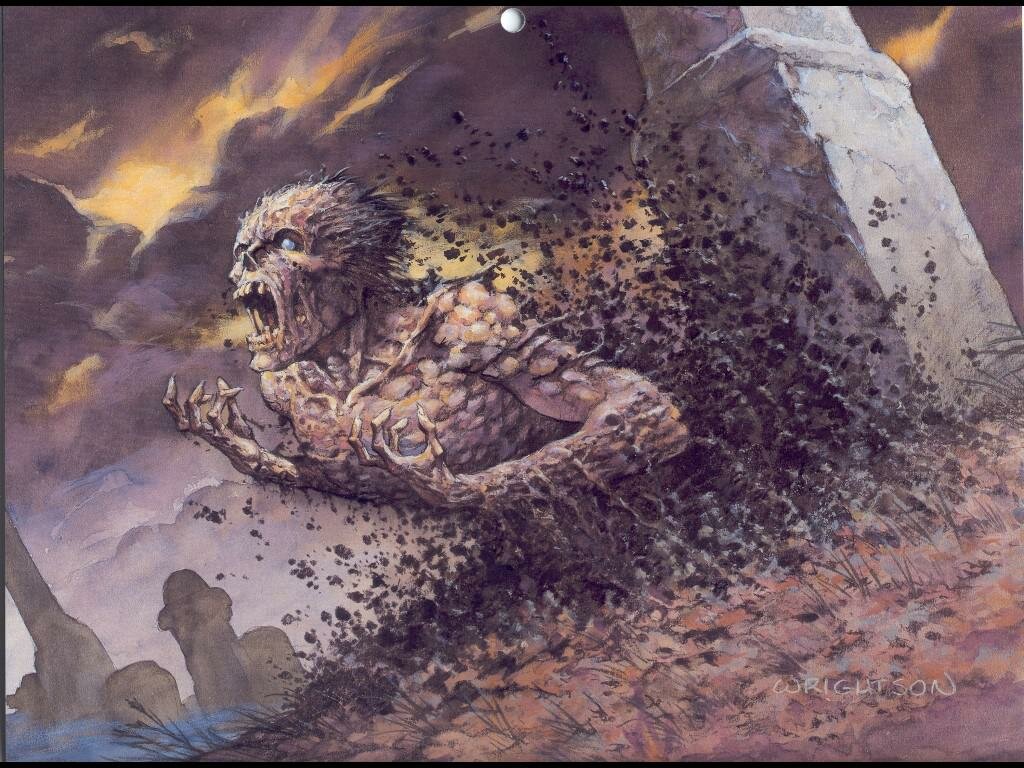Top 10 Medieval Kingdoms
Suggested by SMSMedieval Europe was a chaotic society of feudal and warring kingdoms. This was a time of constant political upheaval and continual, seemingly futile warfare, during which entire kingdoms rose and fell in the blink of an eye. The disorganized nature of the medieval period made it possible for powerful families to gain lands, titles and subjects with whatever resources were available to them and for no reason other than greedy expansionism. It seems that anyone and everyone above the lowly rank of peasant was out to grab power for themselves and create their own personal empire, no matter how small. Maintaining these kingdoms, however, was a much more difficult task than forming them. The politic of the day meant that an entire kingdom could be destroyed or conquered with the event of one death, through accident or assassination, or one cleverly orchestrated marriage.
The medieval map of Europe was very different to the one we see today. Small, insignificant nations dotted most of the continent and changed hands regularly. All the major players were there, often taking different guises to they ones they posses in the modern era, but it would take several centuries for them to consolidate their power into the colonial nations that would later dominate the world. In the meantime other, now extinct kingdoms ruled in their place, hoping to be one of the few to make it through the great power struggles of the age.
These are the most badass of the Medieval kingdoms. Some went on to be the most powerful nations on Earth. Others came close, but did not quite make the grade.
10. Norman England

Normandy is a duchy in the North of present day France. In medieval times it was a powerful territory and the dukes of Normandy spread their influence across Europe. Normandy was such a powerful duchy that it captured a kingdom over twice its size.
The most famous Norman Duke was William the conqueror. William was great builder of castles and cathedrals, which greatly impressed the pope and others in the Christian world. At the battle of Hastings, in 1066, he won the crown of England and with it the title he’d always wanted – King!
Despite it’s pride, and centuries of historical bias, the kingdom of England was actually ruled from France for several hundred years. The Normans were great builders and provided England with a legacy of castles, cathedrals and monasteries. William also initiated the great census known as the doomsday book; a vast catalog of every man, woman, child and pig in his new kingdom.
9. Aragon

This relatively small kingdom in Northern Spain grew to enormous influence before it’s annexation into Spain. At the height of its power, Argon ruled a small-medium sized empire including neighboring Catalonia and Valencia, the Balearic Islands, Sardinia, Naples (Southern Italy), Sicily and, at the farthest reach of this Mediterranean empire, Athens.
This wide spread empire made it difficult for the Aragonese kings to uphold their power. They were often accused of neglecting their home kingdoms in Aragon, Catalonia and Valencia. One king shared between so many kingdoms was pushing it and so in the thirteenth century the Pope called a crusade against Aragon. The noblemen rose up against their shared king and forced him to sign the ‘Union of Aragon’, which gave them powers over him similar to the act of Magnicarta, signed in England.
Aragon ceased to exist as a kingdom after its invasion by the Spanish Kingdom of Castile. Aragon was subsequently merged with Castile to create the new Kingdom of Spain in 1516.
8. Angevin England

The house of Anjou was an extremely powerful medieval family based in the Earldom of Anjou, in Northwest France. Collectively it controlled countries from Poland to Jerusalem. When the Angevins successfully took control of the Duchy of Normandy it won the crown of England too, and added it to an Empire that stretched from Ireland, through France, to the Pyrenees.
The branch of the Angevin dynasty that came to rule England were called the Plantagenets. The Plantagenets ruled England, Ireland, and Wales, plus the territories of Anjou, Aquitaine, Maine, Normandy, Brittany, Gascony and Cyprus.
The most famous of the Plantagenet kings were brothers John and Richard. Otherwise know as the ‘Coeur De Lion’, or the Lion Heart, Richard is remembered as a great and brave Christian warrior for his role in the Crusades. Recent historians, however, are painting a new picture of England’s most heroic king, who initiated a holocaust of London’s Jews and killed his own father. Despite being it’s king, Richard only visited England once and spoke French rather than English. He died after being shot by an arrow whilst besieging a rebel stronghold in his French territories. He famously called for the archer and forgave him, but the archer was flayed and hanged to death as soon as Richard passed away.
John is not remembered so fondly as his brother. He lost the territory of Normandy to the Kingdom of France (with the exception of the channel islands which remain British today). Later, he lost the crown jewels of England in a bog. Silly John!
7. Hungary

Hungary is the oldest of all the medieval kingdoms. It existed long before France or England became unified and before its counterpart, Austria, had even been born. Hungary sat exactly where it does today but with borders expanding much further, into Transylvania and the present day countries of Croatia, Serbia and Slovakia. Hungary was successful in repelling invasions by the Mongols and the Ottomans, Europe’s greatest enemies.
Hungary was also one of the richest Kingdoms in Medieval Europe, owing its wealth of gold mines.
During the fourteenth century, Hungary was ruled by Angevin kings and briefly occupied the Kingdom of Naples. It was later inherited by the powerful Habsburg family and became part of the Austrian Empire.
6. The Kingdom of France

France had long been the home of powerful families and the territories of France were some of the most successful in Europe. However, in the early medieval this power had more to do with the strengths of the component territories of France than with the French crown itself. The duchies and lands that made up France were largely autonomous and, although they officially paid homage to the king of France, sought expansion of their own power rather than that of their monarch. The duchy of Normandy, and later Anjou, had become so powerful that they had earned the right to be considered equal to their king by becoming themselves the kings of England. This was a problematic situation for the French kings as they knew that it would not be long before the French rulers of England, Jerusalem and other countries came to surpass them. This would either end with the complete disillusion of France, which was now little more than a shaky alliance outside of its central Parisian territory, or the assumption of the French crown by one of its subjects.
Something had to be done about the powerful Angevins and their brothers the Plantagents who now ruled England and most of France. The French kings were of Angevin stock themselves, but were from the Capetian side of the family.
The situation was to turn around in the twelfth century with the reign of king Louis VI (Louis the fat), his son Louis VII and the royal advisor to them both, Abbot Sugar. Louis VI was more warlike than his predecessors and commanded much more respect. Under the advice of abbot sugar he was able to claw back dominance over his defiant Dukes and Barrons. Regular court sessions were called and those that did not turn up had their lands seized by the crown. A marriage with Eleanor of Aquitaine saw Louis VII gain the title of Duke of Aquitaine. However, the marriage was dissolved and Elanor later married Richard Plantaganet, who became Henry II of England, Lord of Ireland, Count of Anjou, Duke of Gascony and Duke of Aquitaine. Their children would be a powerful group and included the Plantagenet kings Richard and John.
King Phillip Augustus of France allied himself with Richard (the lion heart) against Richard’s father but then found an equal enemy in Richard when he became King of England himself. It was only when Richard was succeeded by his brother John that the French were finally able to gain control of Normandy and Anjou, becoming lords in their own land at last.
Later, France would become an absolute monarchy and asserted the king’s divine right to rule. A long commitment to the crusades had earned the French kings brownie points with the Pope and France went from strength to strength, eventually becoming one of the world’s most powerful nations.
5. Kievan Rus

Kievan Rus was not technically a kingdom but a principality, probably the largest principality in history. It occupied a vast area of Eurasia, from Scandinavia to the Ukraine. The population was an eclectic mix of Slavs, Finns and the many ethnic groups that still make up Western Russia today. In an unlikely twist, however, the ruling class were of Viking descent. Legend tells that the local peoples were so impressed by the Vikings that they invited them to come into their land and rule over them as princes. Although it remains likely that this is a Viking account written after all the usual the pillaging was over.
Centers of power in Kievan Rus were the cities of Kiev and Novgorod, which established itself as an Oligarchal Republic. These became centers of learning and culture in what was previously an untamed land.
In the Early medieval period, Kievan Rus was a rich nation, built upon the trade of furs and honey. It controlled trade routes in Eastern Europe and the Black Sea and became so powerful that it even made war on the powerful Byzantine Empire, attacking Constantinople its self in a somewhat stereotypical Viking raid. A peace treaty was later signed on equal grounds. The Rus were duly Christianized and the Grand Prince was given his official title and crown.
Asking a bunch of Vikings to share a vast and rich land such as Russia is clearly a bad idea, however, and the Rus did not last more than a few centuries before descending into anarchy. A total of eighty-three civil wars saw the kingdom split into over sixty separate principalities. The arrival of the Mongols destroyed many of these fledgling states, but those that survived did enjoy relative prosperity, forming alliances that would ultimately benefit from the stability and trade that the Mongols brought. These alliances were the Ukrainians to the South, the Belorussians, and the Russians to the North, all of which have survived as modern nations in the present day.
4. Spain

Spain has its beginnings as a number of small kingdoms in the North of present day Spain. These kingdoms were established by Christian Visigoths and in the medieval period were known as Leon, Castile, Navarre and Aragon. Several smaller Spanish kingdoms, such as Valencia and Barcelona were annexed into the Aragon Empire during the second and third centuries BC. Portugal emerged around this time as an offshoot of the kingdom of Leon.
Movement towards a united Spain as we know it began in the thirteenth century when the twin kingdoms of Castile (central) and Leon (North West) became united. The newly expanded Kingdom of Castile then expanded southwards into the Muslim territories of Andalusia. The kingdom of Spain was not formed until 1516, when Castile annexed the Kingdom of Aragon, inheriting its other Spanish position and its overseas acquisitions in the Mediterranean.
When the Kingdom of Spain arrived on the global scene it already controlled a small empire. From Aragon it had gained the vassal kingdoms of Naples, Sicily and Sardinia, and also controlled a portion of the Netherlands, in present day Belgium. By this point, the joint kingdoms of Leon and Castile had added Granada (South) to their Spanish territories, conquered the Canary Islands and begun the colonization of Hispania and Cuba. In the following centuries, as the rest of Europe was fighting amongst themselves, Spain lost it’s Italian positions but conquered build a huge empire in Mexico and central America, Florida, California, the Philippines, and divided South America between itself and its Portuguese neighbors.
Medieval Spain was a place of incredible religious intolerance. The inquisition sought out those with undesirable religious and political beliefs, Gypsies were persecuted and Jews were either forced out of the country or massacred.
3. Austria

Austria was home to the powerful Habsburg dynasty, one of the most successful families in history. The story of the Habsburgs, and the story of Austria, is one of success after success. As royal families go they were right at the top of the tree from their beginnings in medieval Germany to the present day.
Austria began its life as an early medieval duchy. It was inherited by the Habsburgs in 1278 and instantly began to grow, enveloping Carinthia and Hungary. Through war and marriage, the Austrians gained much territory and eventually became one of the largest empires in Europe. At one time, the Austrian Empire stretched from Bohemia and Galacia in the North to Dalmatia and much of the Balkans in the South, and from the Austrian Alps to Transylvania and the Carpathian Mountains in the East. Through marriage, the Austrian Habsburgs also controlled many of the low countries (Holland).
When the Habsburgs inherited the crown of Spain they won the biggest jackpot of the times. Not only did they now control Spain and its territories in Belgium, but also it’s overseas colonies in the Americas.
2. The Ottoman Empire

As a Turkish Sultanate, the Ottoman Empire evolved alongside the remnants of the Byzantine Empire based in Constantinople (present day Istanbul). Later, the Ottoman Empire surrounded and eventually enveloped Constantinople, taking all of its former territories. During the medieval period the Ottomans spread across Turkey and Greece, and into Europe via the Kingdom of Thrace and the Balkans. As a powerful Muslim nation, the Ottoman Empire caused panic and alarm in the Christian world, who mounted several crusades against them, particularly to protect the city of Jerusalem. But the combined forces of Christian Europe failed to stop the Ottomans, who continued to spread across North Africa, into the Middle-East and deeper into East Europe.
The Ottomans were able to capitalize on the power vacuum caused by their defeat of Byzantium and formed alliances with several small European nations in need of protection. These nations, such as Wallachia, Moldavia, and Ragusa, were later annexed into the empire. The Ottomans also found allies in several smaller Muslim kingdoms, allowing their rapid spread across the Muslim world.
At its height the Ottoman Empire stretched across North Africa, from Algeria to Egypt, along the shores of the Red Sea, through the holy lands and Mesopotamia, Turkey, the Caucuses, the Crimean peninsular and into Greece and the Balkans, as far North as Hungary.
The Ottoman Empire existed, in a smaller form, until the 1920s when it became the Republic of Turkey.
1. Russia

Russia was the most powerful successor to Kievan Rus. It began as the Grand Duchy of Moscow. Far out away from the power centers of Europe, Moscow had to fend for its self. It set about defeating the Mongols and destroying their Khananates across Eurasia. Once the Mongol threat had been removed, Moscow found it’s self in the perfect position to begin establishing an empire. It annexed Novgorod and other Rus principalities.
The most famous of the medieval Russian leaders was Ivan IV (Ivan the Terrible). In 1547 he was crowned the first Tzar of Russia. He destroyed the Mongol kingdoms along the Volga River and transformed Russia into a modern state with a code of laws and several centers of religion and learning. However, as the name suggests, Ivan the Terrible wasn’t all sunshine and kittens. An unsuccessful war in Lithuania, an attack on Moscow by the Crimean Tatars, a terrible famine and Ivan’s legendary cruelty helped to make this reign one of the many dark periods of Russian history. He ordered the entire population of Novgorod (once one of his richest cities) to be slaughtered before burning the city to the ground. Ivan is also remembered for his elaborate torture techniques. He is said t have kept bears in order to maul prisoners to death. A common torture technique was to have subjects bathed in freezing water and then burned. Ivan believed that if this were done in a repetitive cycle it would be akin to the tortures of hell. This was in keeping with his tyrannical piety. Ivan is said to have beaten one of his wives for wearing immodest clothing, causing her to miscarry.
Ivan was succeeded to the throne by his mentally ill son, Feodor. Known as Feodor the Bell Ringer, this Tzar loved to travel the kingdom ringing the bells of churches. It is now believed that Feodor may have poisoned Ivan, after the kooky Tzar tried to rape Feodor’s wife. After the death of Feodor, the line ended and the slightly less insane Romonovs came to power.
After several unsuccessful wars of expansion in Poland and the Baltic states, Russia turned its attention Eastwards. By the mid seventeenth century Russia had colonies in Siberia and along the Pacific coast. Shortly after that, Peter the Great won lands in the North West and established St Petersburg, enacting his plans to turn Russia into a great and enlightened Christian empire.










i was wondering where is there a list of all the kingdoms and prinicpalities that made up Europe. I wish to research them. thanks for putting this up. this was good read
Medieval Russia hadn't big population despite its huge territory. United Russia had 6M population in 1500AD (around 70% of Russian ethnicity). And it's economy was extremly backward in Eastern Slavic Orthodox states. Medieval Austrian state had only 1,5 M population around 1500AD. France had 16M Polish Lithuanian state had similar. England had 4M, Hungary had 6M. Therefore the comparison is wrong.
People didn't like the Domesday inspectors for the same reason we don't like the tax-man today — he wants into our wallets!
Where is Polish – Lithuanian Commonwealth? it was around 400 000 square miles and in it's peak reached from Baltic Sea to Black Sea.
Hungary didn’t repel the mongols. The reconnaissance force of 20,000 mongols wiped the floor with the Hungarians and the polish at the same time defeating several armies of over 80,000 men each. They only turned around because Ghengis Khan died and they had to choose his successor.
That may be true and the fact that Khan died was infact very lucky for them BUT they still managed to hold them off long enough for Kahn to die.
I like Aragon I heard it was pretty good what do you think?
its true